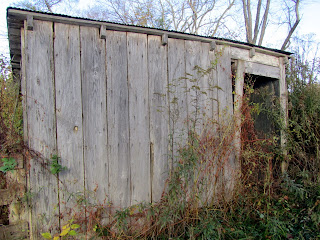Henry David Thoreau once said about pumpkins, "I'd rather sit on a pumpkin and have it all to myself than be crowded on a velvet cushion." That may also be true for any one of us, as our love affair with pumpkins seems to grow out of dark, spooky nights, ancient legends and fairy tales that end in "and they lived happily ever-after..."
 |
| The colors of the season mirror the colors of pumpkins. |
 Yet, bright orange and creamy white globes coupled with silvery green stems can take our breath away in the stillness of a starry night or even a crystal-clear day, conjuring up images of cackling witches, black cats and ghosts swirling around haunted houses.
Yet, bright orange and creamy white globes coupled with silvery green stems can take our breath away in the stillness of a starry night or even a crystal-clear day, conjuring up images of cackling witches, black cats and ghosts swirling around haunted houses.
The pumpkin has been around for thousands of years and is thought to be a native of Central America, bringing with it a rich heritage, not only to the legends of Halloween throughout the world, but also to the tradition of Thanksgiving here in America, both in decoration and nutrition. Pumpkins were present, if not at the first Thanksgiving between the Indians and pilgrims, but definitely documented at their Thanksgiving meal, the following year. Since then, pumpkins have graced just about every Thanksgiving table, in some shape or form, throughout America ever since.
"For pottage and puddings and custards and pies
Our pumpkins and parsnips are common supplies,
We have pumpkins at morning and pumpkins at noon,
If it were not for pumpkins, we should be undoon." (Pilgrim verse, circa 1633)
 |
| I'm really glad that hairdressers today do not make a habit out of using pumpkin shells as a guide for cutting hair! |
Rich in antioxidants, pumpkin extracts have been used for medicinal purposes, too. Long ago, pumpkin was thought to help erase freckles and cure snake bites. Traditionally, pumpkin is used in treating bladder irritations, kidney infections and intestinal worms while the seeds of pumpkins are believed to have properties that can effectively aid in avoiding and/or treating prostate cancer.
 A little pumpkin wisdom from the late 1800's described this member of the squash family as "usually very large and of considerable weight. It is sometimes said of a very stout person, that he resembles a pumpkin. The comparison is vulgar, and cannot fail to be taken as an affront." That being said, I would also add that there are indeed some pumpkins out there that only a mother could love. However, the charm and whimsy of any pumpkin is something to be cherished by all of us as they often hold snapshots in our hearts of colorful memories, happy thoughts and good times.
A little pumpkin wisdom from the late 1800's described this member of the squash family as "usually very large and of considerable weight. It is sometimes said of a very stout person, that he resembles a pumpkin. The comparison is vulgar, and cannot fail to be taken as an affront." That being said, I would also add that there are indeed some pumpkins out there that only a mother could love. However, the charm and whimsy of any pumpkin is something to be cherished by all of us as they often hold snapshots in our hearts of colorful memories, happy thoughts and good times.









No comments:
Post a Comment
Note: Only a member of this blog may post a comment.